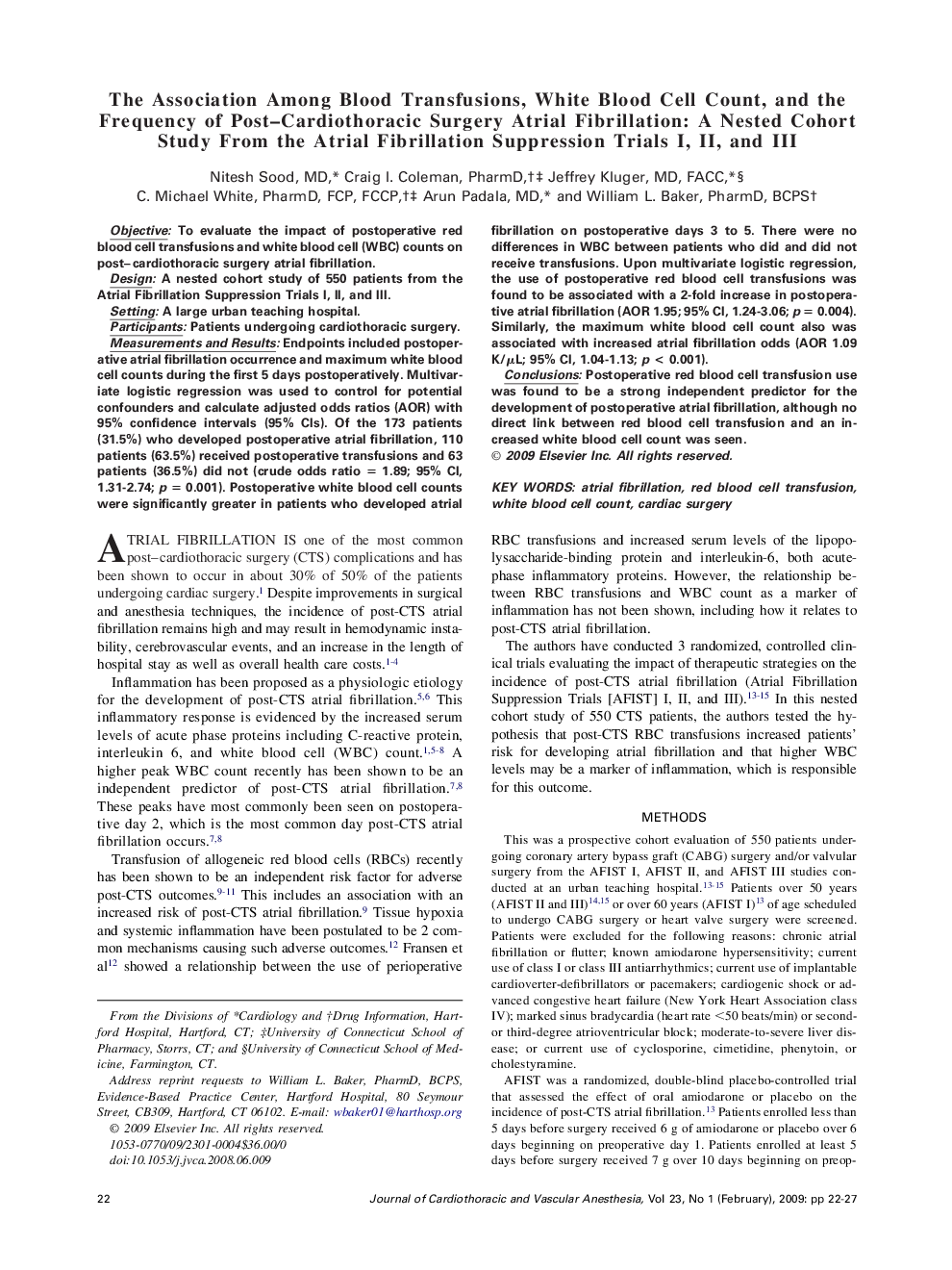| Article ID | Journal | Published Year | Pages | File Type |
|---|---|---|---|---|
| 2760922 | Journal of Cardiothoracic and Vascular Anesthesia | 2009 | 6 Pages |
ObjectiveTo evaluate the impact of postoperative red blood cell transfusions and white blood cell (WBC) counts on post–cardiothoracic surgery atrial fibrillation.DesignA nested cohort study of 550 patients from the Atrial Fibrillation Suppression Trials I, II, and III.SettingA large urban teaching hospital.ParticipantsPatients undergoing cardiothoracic surgery.Measurements and ResultsEndpoints included postoperative atrial fibrillation occurrence and maximum white blood cell counts during the first 5 days postoperatively. Multivariate logistic regression was used to control for potential confounders and calculate adjusted odds ratios (AOR) with 95% confidence intervals (95% CIs). Of the 173 patients (31.5%) who developed postoperative atrial fibrillation, 110 patients (63.5%) received postoperative transfusions and 63 patients (36.5%) did not (crude odds ratio = 1.89; 95% CI, 1.31-2.74; p = 0.001). Postoperative white blood cell counts were significantly greater in patients who developed atrial fibrillation on postoperative days 3 to 5. There were no differences in WBC between patients who did and did not receive transfusions. Upon multivariate logistic regression, the use of postoperative red blood cell transfusions was found to be associated with a 2-fold increase in postoperative atrial fibrillation (AOR 1.95; 95% CI, 1.24-3.06; p = 0.004). Similarly, the maximum white blood cell count also was associated with increased atrial fibrillation odds (AOR 1.09 K/μL; 95% CI, 1.04-1.13; p < 0.001).ConclusionsPostoperative red blood cell transfusion use was found to be a strong independent predictor for the development of postoperative atrial fibrillation, although no direct link between red blood cell transfusion and an increased white blood cell count was seen.
